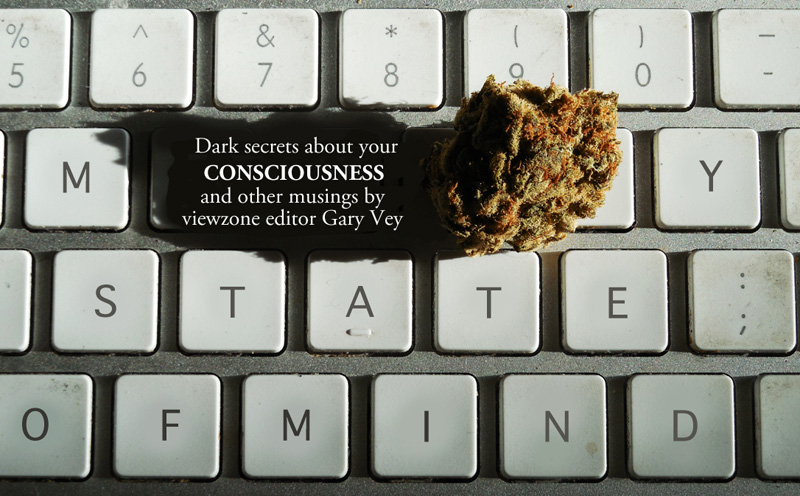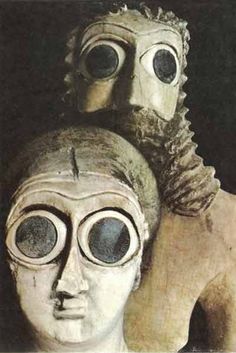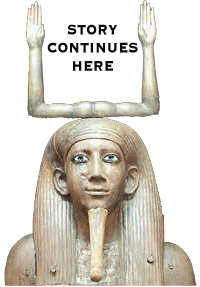
To yourself, you are the center of the universe. To someone else, you are just someone else. -- Anonymous
Jaynes proposes that our present state of consciousness is a rather newly acquired mental ability. He places the transition at about 1000 BCE. Before that, commencing with the discovery of language (including symbols, sounds and hand signs), humans possessed a Bicameral Mind.
bi-cam-er-al (adjective) a legislative body having two branches or chambers.
In this pre-consciousness state, man was ruled by the two hemispheres of his brain, but unlike modern man, the hemispheres did not communicate with an "inner voice", an internal narrative like we have. Instead they functioned more independently of each other. There was no inner voice.
"...It is perfectly possible that there could have existed a race of men who spoke, judged, reasoned, solved problems, indeed did most of the things we do, but who were not conscious at all." -- Jaynes
In this bicameral mind, both hemispheres controlled the muscles and maintained coordination. We see this where patients have had their corpus callosum severed in surgery. Somehow the hemispheres still cooperate and coordinate their control. People with two separate brains can walk and talk with no deficits. It's the higher thinking that reveals the split.
The Left Hemisphere was dominant in pre-consciousness and controlled much of the reactive behavior of the individual. The Right Hemisphere served as a backup for these mental functions, duplicating them so that, should the Left Hemisphere be damaged, the Right Hemisphere could be rewired to take over certain tasks. But it did something different once language began to develop.
Instead of duplicating the language center (Left Wernicke's Area) in the Right Hemisphere, this corresponding area was reserved for some special task.
Jaynes proposes that the Right Hemisphere became a kind of protector and overlord who watched the actions of its twin brain and intervened to warned of danger, predict where the game would be found, point out the likely places to find water or flint. This voice was "heard" by the Left Hemisphere of early man as an audio hallucination and this originated with the Right Hemisphere.
The "Voice" (sometimes called the Logos) spoke in few words but was authoritative and had to be obeyed. The identity of the voice likely began as the recollected voice of the parent, repeating some guidance or order. This voice was beneficial in that it would maintain continuity of a task in the absence of the authority figure, be it parent, tribal leader, king or eventually an idol.
 As the hallucinated voice guided a man, a common mode of behavior was established which enabled families and tribes to live in progressively larger communities. To maintain order and minimize the confusion of having many different voices in diverse cultures, the voice of ultimate authority was confined to a leader or deity, whose voice guided the people often well after his death.
As the hallucinated voice guided a man, a common mode of behavior was established which enabled families and tribes to live in progressively larger communities. To maintain order and minimize the confusion of having many different voices in diverse cultures, the voice of ultimate authority was confined to a leader or deity, whose voice guided the people often well after his death.
When supernatural forces were involved, the idols and statues in temples usually had big engaging eyes to facilitate the focus of audio hallucinations of the attendees who sought their guidance.
Jaynes spends a bit of time suggesting that our reverence for the dead, as demonstrated in many ancient burial sites, is likely because the dead person's voice remained in the psyche of the survivors and he spoke to them as if still alive.
Fast forward from the stone age to 3000 years ago and we see language getting more able to describe events and things with greater precision. The hallucinated voices have confined themselves to special individuals who serve as shaman, prophets, seers, oracles, Pharaohs, priests and kings. The voices of these intermediates became the hallucinated voice of authority in the minds of men.

"... some of these small objects. we may be confident, were capable of assisting with the production of bicameral voices. Consider the eye-idols in black and white alabaster, thin cracker-like bodies surmounted by eyes once tinted with malachite paint, which have been found in the thousands, particularly at Brak on one of the upper branches of the Euphrates, that date about 3000 B.C. Like the earlier Amatrian and Gerzean tusk idols of Egypt, they are suitable to be held in the hand. Most have one pair of eyes, but some have two; some wear crowns and some have markings clearly indicating gods. Larger eye-idols made of terra cotta have been found at other sites, Ur, Mari, and Lagash; and, because the eyes are open loops, have been called spectacle-idols. Others, made of stone and placed on podiums and altars, are like two cylindrical doughnuts positioned a distance above an incised square platform that could be a mouth." -- Julian Jaynes |
I admit, this is very different from anything I have ever heard before. So let's look at what made Jaynes reach this conclusion.
So How Do You Prove This Theory?
We're going to be looking at human culture and stories and architecture prior to, and right after, 1500 BCE. We're going to see if the minds of men were different. To do this we need to understand what we have now, and what pre-consciousness man did not have.
Consciousness rests on our ability to be aware of ourselves as thinking beings with a unique perspective on reality PLUS we understand that fact also applies to other people. The awareness here includes our ambitions, feelings, opinions, understanding and we infer that other people also have these same attributes, albeit different for them.
This aspect of consciousness is sometimes called the Theory of Mind [Reference]. It is found to exist in modern humans beginning at age of 4 or 5. This is something that proves the existence of consciousness and, wouldn't you know, there is a test for it. I will include a very short video here to show you how this works:
Since this was discovered in the 70s, psychologists wanted to know if humans were the only species with Theory of Mind. They got some surprising results when they tested chimpanzees.
They could not apply the same test as demonstrated in the video (above) because chimps could not understand the dialog. But they developed a similar test.
They were able to demonstrate that the chimps could look at a film of man attempting a task, like reaching for a banana that was too far away. Then when they were shown pictures of various items, they selected the items which could be used to achieve the task (i.e. they would choose a long stick).
This demonstrates that the chimps were able to put themselves in the place of the actor, recognize his goal and then, using themselves as an example, solve the problem by selecting the correct tool that they themselves would use. It looked like chimps had the Theory of Mind and consciousness!
After 30 years, this much cited experiment was reviewed, casting doubt on the results. Though they passed the test for being able to understand motives and perspectives from others outside of themselves (what psychologists refer to as Reading Minds), the chimps could not grasp the concept of false beliefs whereby they could understand how another person could make an error in judgement because they lacked significant information.
Understanding false beliefs is the special case in which an observer predicts or explains the behavior of an actor based on a judgment of what that actor believes to be the case, not what really is the case as the observer knows it (e.g. the actor believes the food is in one place when the observer knows that it is really in another).
This is worth examining because it suggests that chimp consciousness is devoid of imagination.
Imagination requires that we have an adequate vocabulary to form a narration about future events or alternate realities. This is a capacity limited to human consciousness because of our expanding verbal record of experiences and shared ideas with other minds. According to Jaynes, humans took this leap when they began to develop writing. Through writing, ideas could be shared, expanded upon and debated across cultures and time.
With this new element of consciousness, man was able to become his own guide and the hallucinated voice from the Right Hemisphere became silent.
Next up: Ancient Literature and Architecture
(Thanks for the kind e-mails. It's looking like this is going to be a few more pages, so please hang in there. The next part is really interesting and not so technical. But first, some more medicine. Later.)
